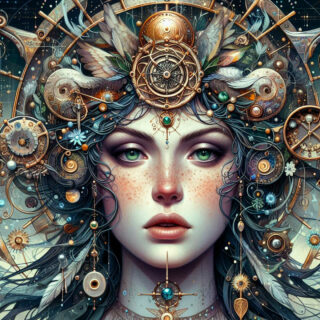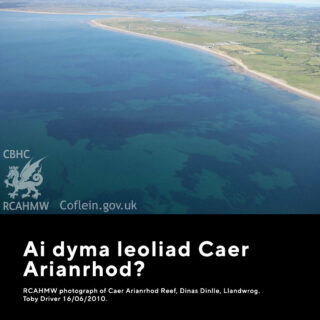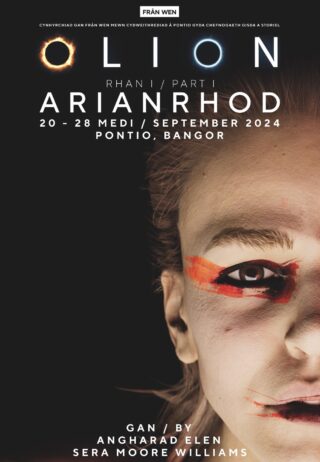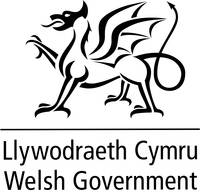Who is Arianrhod?
Forgotten hero gets centre stage she deserves
The Mabinogi is full of mythical tales that have been told for hundreds of years, passed down verbally from generation to generation, changing and evolving with each retelling. There’s no wonder that there are so many versions, with some characters’ stories being fleshed out and others forgotten. One overlooked tale in particular caught the attention of Frân Wen’s creative team - that of a sister, mother and leader.
The upcoming production OLION reimagines her story, found in the Fourth Branch of the Mabinogi - the story of Arianrhod.
Why is it that we know the names and stories of characters like Rhiannon and Branwen, but not Arianrhod? If you ask around, people might think of Caer Arianrhod - the ‘sunken city’ off the coast of Dinas Dinlle - but not many would be able to tell you about her. Why is that?
In part, it could be because her story is secondary to that of her brothers’ - she is introduced in an almost tangent-like tale, and while her role is certainly crucial, the character of Arianrhod isn’t explored in much depth. We don’t learn about her backstory, or her hopes and desires. Instead, just as we feel like we’re getting to know her, her story ends, without another mention of her at all. The reimagining of Arianrhod’s story in OLION aims to give her the legacy she deserves.

Y Mabinogi
The tale in the well-known version of the Mabinogi tells of her role as potential footholder for Math ap Mathonwy - the ruler of Gwynedd and her uncle - the brother of her mother, Dôn. Math was destined to rest his feet in the lap of a virgin in order to survive when not on the battlefield. His previous footholder, Goewin, was stripped of her virginity by Arianrhod’s brothers, Gwydion and Gilfaethwy, who then offered up Arianrhod as her replacement. Math made her step over a magic wand to test her virginity, which she failed, producing two children - one, a boy that proved to be strong and fond of the sea, who they named Dylan Eil Ton; the other, birthed quickly as Arianrhod ran away to her fortress in shame, and went unnoticed by everyone except Gwydion, who took him away and raised him as his own.
From there, Arianrhod’s reputation as a “wicked woman” is carved out as we follow Gwydion’s successful attempts at tricking her into granting Lleu Llaw Gyffes his name, as well as arming him with weapons. It’s the third challenge, or curse, that she places on Lleu - “he will never have a wife from the race that is on this earth at present” - that brings about the existence of Blodeuwedd. You could say that according to this version of the tale, without Arianrhod, we might never have had the iconic woman made of flowers.
It’s the act of imposing these tyngedau (destinies) that she is remembered for, and she doesn’t exactly come across as the most motherly of figures. Some people say these challenges come from a place of testing her son, pushing him to find resilience in the face of adversity, but when we really consider the relationships in the text, it seems more like she is retaliating against the actions of her brother, which led to her public embarrassment.
Interestingly, that’s where Arianrhod’s story ends. She is pushed to the sidelines by Lleu and Blodeuwedd, and isn’t mentioned again. Instead, we have to turn to the stories that have been passed down orally through generations to find out more about her and her people.
Caer Arianrhod
If you’ve grown up in North Wales, especially anywhere near Llandwrog, you might have heard the story of Caer Arianrhod - the sunken fortress off the coast of Dinas Dinlle (spelled ‘Dinlleu’ in old texts). In folklore it is often called a variant of Tregan Anthrod (Tre’ Gaer Arianrhod), and according to the tale the town was drowned because of the wickedness of its inhabitants. Three sisters were said to have escaped, luckily being on the mainland at the time collecting food and water. Their names can still be found in place names in the area; Bedd Gwennan (Gwennan’s Grave), Rhos Maelan (Maelan’s Moor) and Tyddyn Elan (Elan’s Homestead). It’s interesting to note the ‘wickedness’ that runs through tales linked to Arianrhod. She’s portrayed consistently as someone who goes against societal norms, and is shunned for it. Maybe that’s why some versions of the story say that she chose to sink her community and create a world under the sea.

As well as the sea, Arianrhod is often connected with the stars. Caer Arianrhod, in fact, is the name used in Welsh for the Corona Borealis - the ‘Northern Crown’ constellation that can be seen in the Northern hemisphere. It’s imagined by some that this is where she transcended after she died, watching over her people under the sea.
Other interpretations
Myths and legends play a huge role in Wales’ literary history and are explored and enjoyed by generations. This isn’t reserved to just us Welsh folk though - the tales of the Mabinogi have spread far and wide, and the character of Arianrhod appears in little pockets across the world.
For example, her name is given to characters in different Japanese video games, such as Memento Mori, Wild Arms 4, and The Legend of Heroes, in which she is also referred to as the Steel Maiden, which feels very fitting.
Arianrhod has also been interpreted as a goddess, and is worshipped by modern pagans and people who embrace the ‘divine feminine’. People often associate her with fertility, reincarnation and the moon and stars, but Angharad Elen, co-author of Part I disagrees. She spent a long time getting to know the character while researching and writing Act 1 of the stage show, and argues that Arianrhod wasn’t this deity that people have come to imagine her as - “she was a real person”.

OLION
Angharad’s feminist reimagining of Arianrhod’s story shines a light on the life she led and the desires she had. Inspired by the Greek idea of Amazonian warriors, Angharad gives Arianrhod the power and voice she lacked in the Mabinogi, fleshing out her story, and putting her at the centre of it, where she belongs.
More information about the trilogy, including how to watch:





